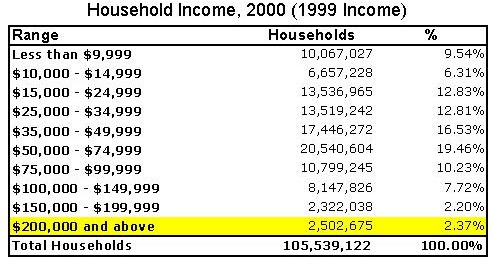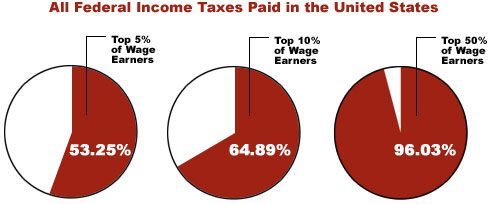So instead of a tax on the "rich", we can call this the "married middle manager tax".
If we look at household income instead of individual salaries, this represents the top 2% of households:

That might not sound like a lot of households, but if we look at the current tax burden in the U.S., it isn't like those top percentages aren't pulling their weight (this is by income, not household income, but should be proportional):

The key thing to keep in mind is that even if the tax proposal doesn't hurt you, taxes have a way of expanding to hit everyone. Consider:
o When income taxes were first introduced, it was only meant for the "rich"The basic premise of people who want to raise taxes is to raise taxes on "anyone who makes more than I do." The problem with this sort of class warfare is that it has a tendency to turn on the very people who enacted it.
o The Alternative Minimum Tax (AMT) was introduced as a tax on the "rich", but will hit nearly 17 million "rich" people by 2010 if it is not modified or repealed.
o Back-door taxes are enacted yearly through phase-outs of deductions and credits. This is the favorite way to increase taxes without actually changing the rates and gets little notice from taxpayers (all those "middle class" goodies like the child tax credit, college debt interest deduction and others start phasing out at a whopping $50K of income).

No comments:
Post a Comment